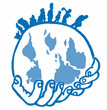The World Health Organization declaration that “the global health emergency of COVID-19 is over” has removed the sense of urgency that for more than three years shaped global health discussions.1 As a result of the pandemic, the topic of intellectual property (IP) and its influence on access to health technologies was widely and intensely discussed. The support gathered by a waiver proposal on certain parts of the Trade Related aspects of Intellectual Property (TRIPS) Agreement, the creation of the COVID-19 Technologies Access Pool (C-TAP) and a number of national and regional initiatives aimed at scaling up production of health goods are just some examples of where the needs of the many were framed above pro昀椀ts and monopolies. Several policy processes that were set-aside, stalled or even stopped during the pandemic have resumed, while initiatives that originated in the response to the pandemic have either evolved or run their course. This policy brief looks at some of the interventions designed during the COVID-19 pandemic to counter the impact of excessive use of IP protection tools. Secondly, it assesses recent post-pandemic policy discussions, at every level, regarding the role of IP in relation to access to innovation. Finally, it sets out several recommendations on the management of IP and related policy processes in order to improve access to health technologies. THE TRIPS WAIVER The TRIPS waiver proposal submitted by India and South Africa in October 2021, in the midst of deadly pandemic for which, at the time, there was no proven treatment, placed the relationship between IP and access to health technologies at the top of the global health agenda.2
HAI
Keywords
